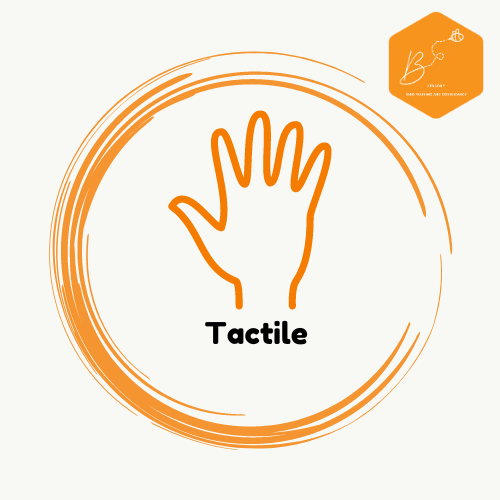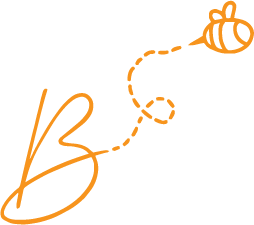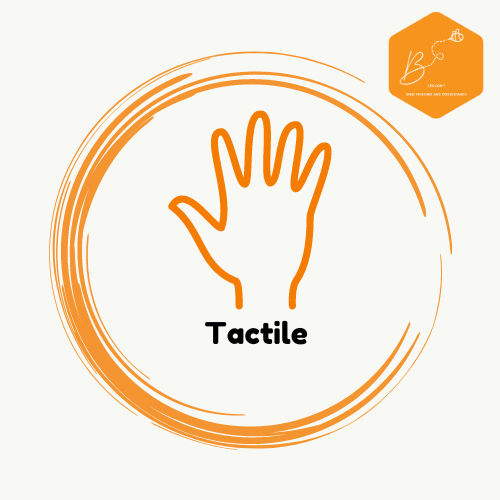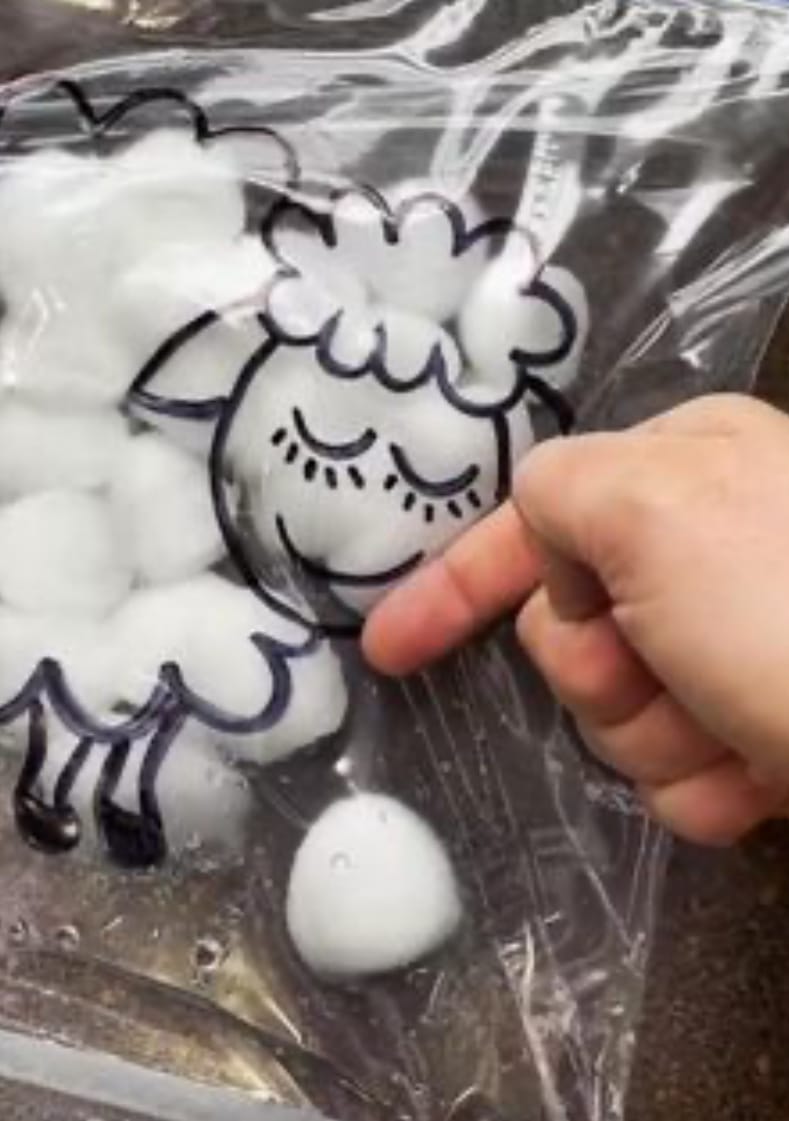Signs and Symptoms of Tactile Difficulties

Signs and Symptoms
It is essential for professionals and caregivers to be able to identify when somebody is having auditory processing difficulties. As well as sensory profiling people to identify their sensory difficulties, being able to recognise the signs of sensory needs is vital for effective management.

Tactile Seeking
Tactile seeking behaviors involve a strong desire for tactile stimulation and sensory input. Individuals who engage in tactile seeking behaviours actively seek out opportunities to touch, feel, and explore different textures and sensations.
Here are some signs and symptoms of tactile seeking behaviours:
- Frequent Touching or Feeling Objects: Individuals may frequently touch or feel objects, surfaces, or materials in their environment. They may use their hands to explore textures, shapes, and temperatures of objects around them.
- Preference for Tactile Activities: Tactile seekers may show a strong preference for activities that involve tactile stimulation, such as playing with sensory materials, engaging in messy play, or participating in hands-on crafts and art projects.
- Exploration of Different Textures: Tactile seekers may actively seek out opportunities to explore and interact with a variety of textures. They may enjoy touching surfaces with different tactile qualities, such as rough, smooth, soft, or bumpy textures.
- Seeking Physical Contact: Tactile seekers may seek physical contact with others as a way of obtaining tactile stimulation. They may seek hugs, cuddles, or hand-holding and may enjoy close physical proximity with family members, friends, or peers.
- Engagement in Self-Stimulatory Behaviors: Tactile seekers may engage in self-stimulatory behaviors that provide tactile stimulation, such as rubbing, scratching, or squeezing objects or body parts. These behaviors may help individuals regulate their sensory experiences and promote relaxation.
- Preference for Certain Fabrics or Materials: Individuals may have a strong preference for certain fabrics or materials that provide tactile satisfaction. They may seek out clothing, blankets, or bedding with specific textures or patterns that they find comforting or enjoyable to touch.
- Craving for Sensory Input: Tactile seekers may exhibit a craving for sensory input and may actively seek out opportunities to satisfy their tactile needs. They may become restless or agitated when deprived of tactile stimulation for extended periods.
- Difficulty with Personal Space Boundaries: Tactile seekers may have difficulty respecting personal space boundaries and may invade others' personal space in their quest for tactile stimulation. They may initiate physical contact with others without regard for social norms or cues.
- Preference for Messy Play: Tactile seekers may enjoy activities that involve messy play and tactile exploration, such as playing with mud, sand, water, or sensory materials like slime or playdough. They may enjoy the sensory experience of getting their hands dirty or feeling different textures on their skin.
- Engagement in Fidgeting or Manipulative Behaviors: Tactile seekers may engage in fidgeting or manipulative behaviors as a way of obtaining tactile stimulation. They may constantly touch, manipulate, or play with objects in their environment to satisfy their tactile needs.
It's important to note that tactile seeking behaviors can vary widely among individuals and may be influenced by factors such as sensory preferences, developmental stage, and individual differences. Providing opportunities for tactile stimulation and sensory exploration in a safe and supportive environment can help individuals satisfy their tactile needs and promote sensory integration and regulation.
Tactile Avoiding
Tactile avoiding behaviors involve a reluctance or avoidance of tactile stimulation and sensory input. Individuals who engage in tactile avoiding behaviours may be hypersensitive to touch and may actively seek to minimise or avoid tactile experiences that they find uncomfortable or overwhelming.
Here are some signs and symptoms of tactile avoiding behaviours:
- Avoidance of Certain Textures: Individuals may actively avoid touching or interacting with surfaces, objects, or materials that they find unpleasant or aversive. They may express discomfort or distress when exposed to textures such as rough, sticky, or abrasive surfaces.
- Refusal to Wear Certain Clothing: Tactile avoiders may refuse to wear certain types of clothing or fabrics that they find uncomfortable or irritating against their skin. They may prefer loose-fitting clothing or clothing made from soft, smooth fabrics to minimize tactile discomfort.
- Sensitivity to Tags or Seams: Individuals may be hypersensitive to tags, seams, or labels in clothing and may find them irritating or distracting. They may cut tags off clothing or seek out clothing without seams to avoid tactile discomfort.
- Avoidance of Physical Contact: Tactile avoiders may actively avoid physical contact with others, including hugs, handshakes, or close proximity. They may express discomfort or anxiety in situations where physical contact is expected or required.
- Preference for Specific Touch Pressure: Individuals may have a preference for specific types of touch pressure and may avoid touch that is perceived as too light or too firm. They may seek out touch that is gentle and reassuring while avoiding touch that is perceived as invasive or overwhelming.
- Withdrawal from Tactile Activities: Tactile avoiders may withdraw from activities that involve tactile stimulation or sensory exploration. They may avoid activities such as messy play, arts and crafts, or tactile sensory bins that require them to touch or manipulate objects.
- Limited Exploration of Environments: Individuals may avoid exploring new environments or unfamiliar places due to concerns about encountering uncomfortable tactile stimuli. They may prefer predictable and familiar environments where they can control their sensory experiences.
- Preference for Cleanliness: Tactile avoiders may have a strong preference for cleanliness and may avoid touching objects or surfaces that they perceive as dirty or contaminated. They may express anxiety or discomfort in environments that are perceived as unclean or unsanitary.
- Heightened Emotional Responses to Touch: Tactile avoiders may exhibit heightened emotional responses to touch, including fear, anxiety, or distress. They may become upset or agitated when touched unexpectedly or when exposed to tactile stimuli that they find aversive.
- Difficulty with Self-care Activities: Tactile avoiders may have difficulty with self-care activities such as bathing, grooming, or dressing. They may express reluctance or refusal to engage in activities that involve tactile sensations, leading to challenges in maintaining personal hygiene and grooming routines.
It's important to recognize that tactile avoiding behaviors can vary in severity and may be influenced by factors such as sensory sensitivities, past experiences, and individual differences. Creating a supportive and understanding environment that respects individuals' tactile preferences and sensitivities can help promote comfort, safety, and well-being for individuals with tactile avoiding behaviors.




